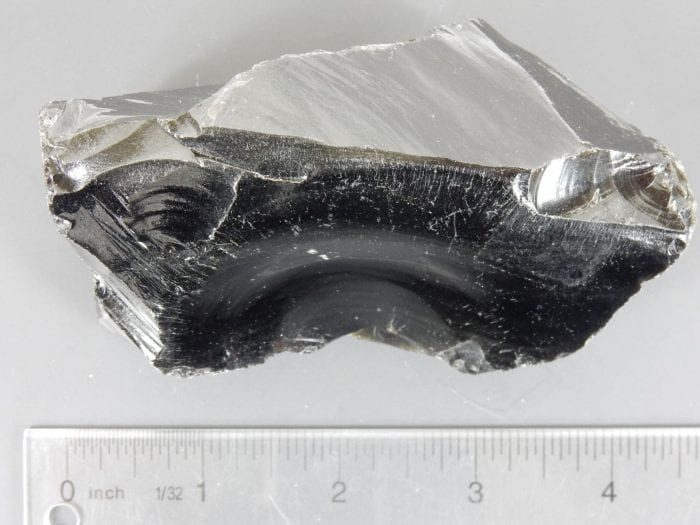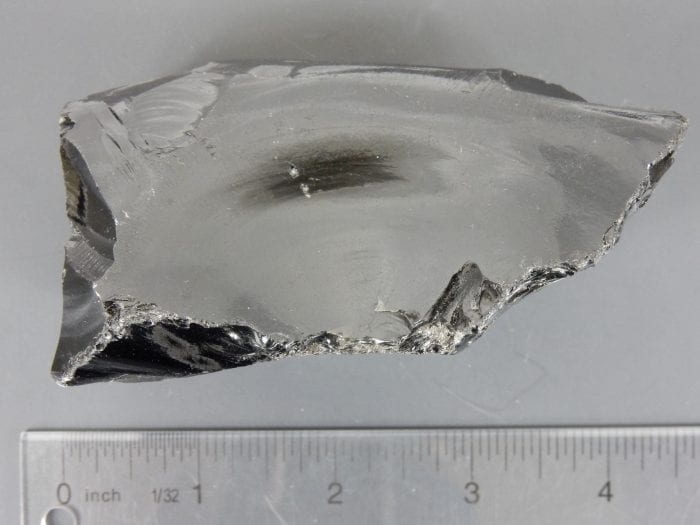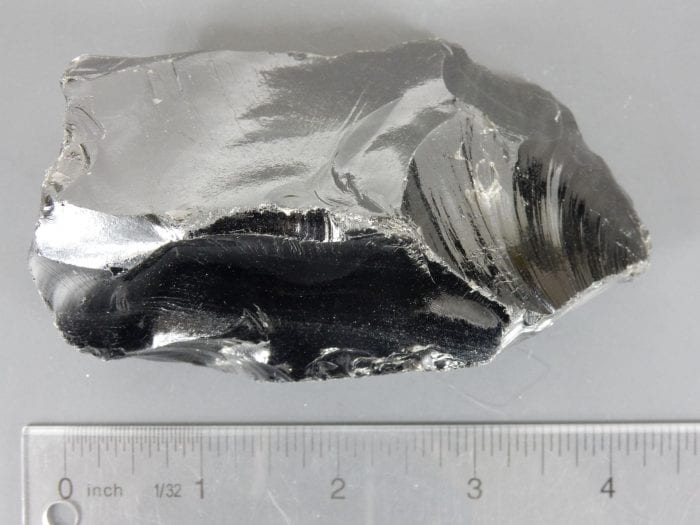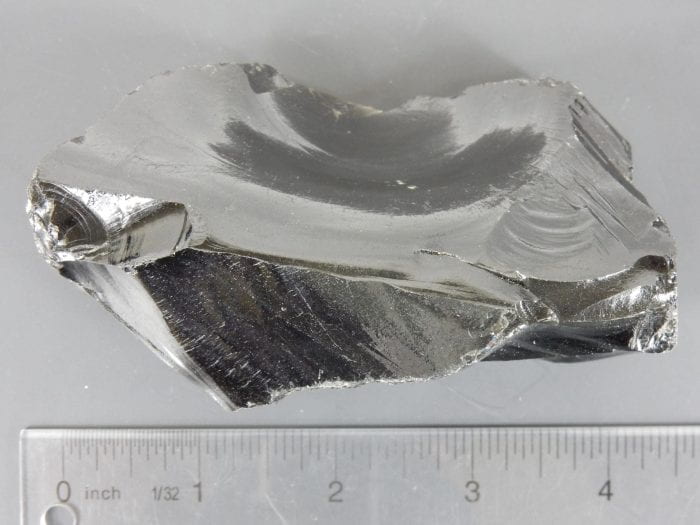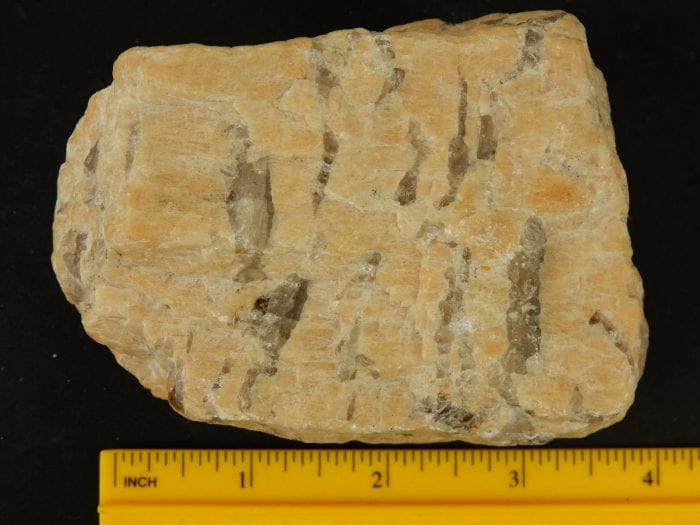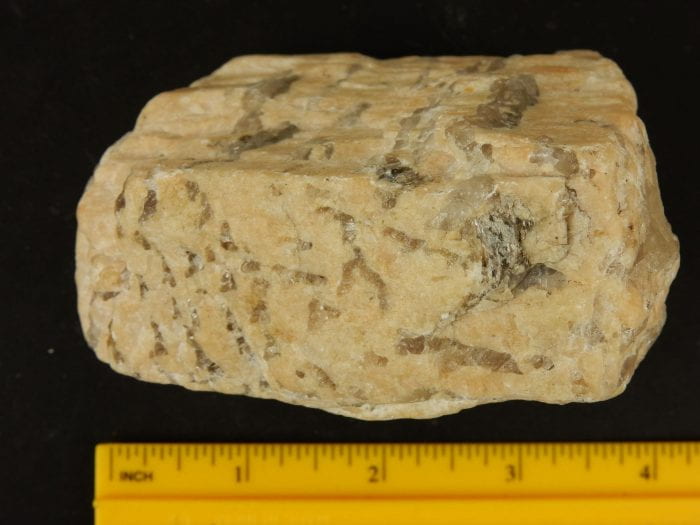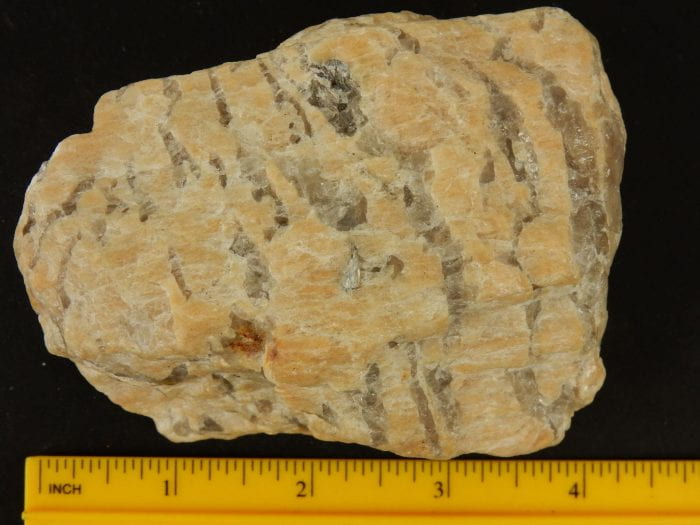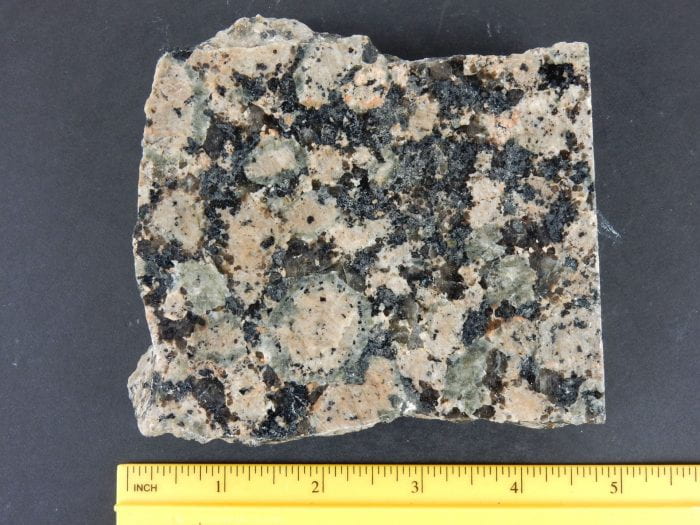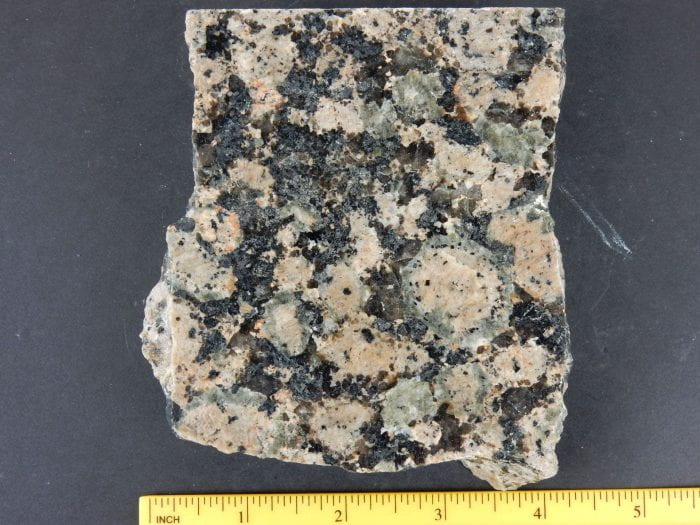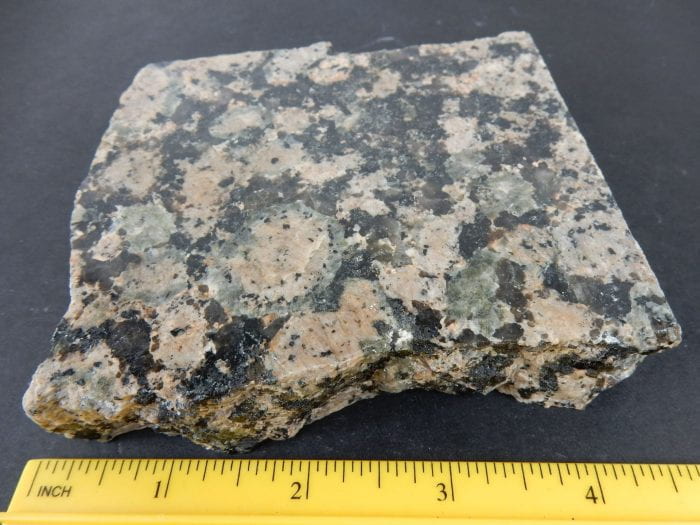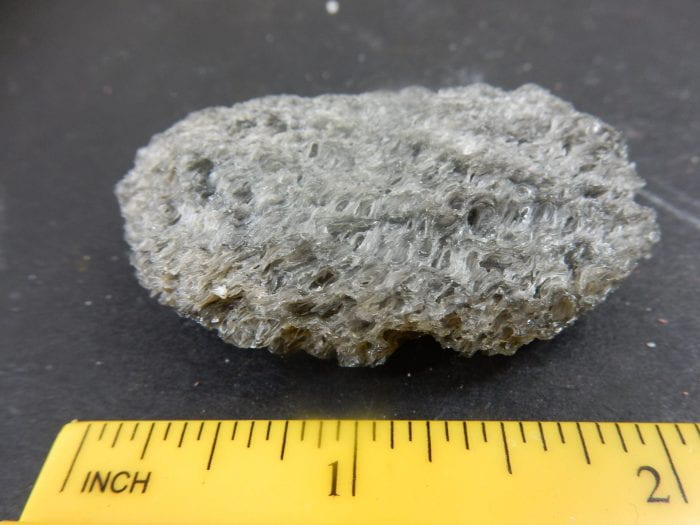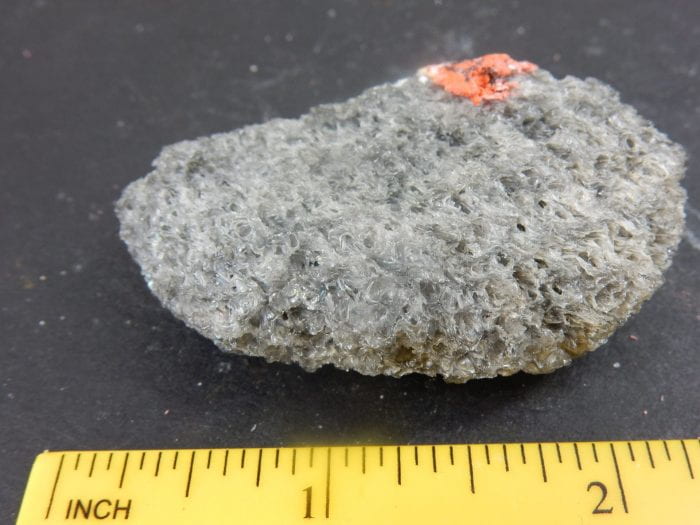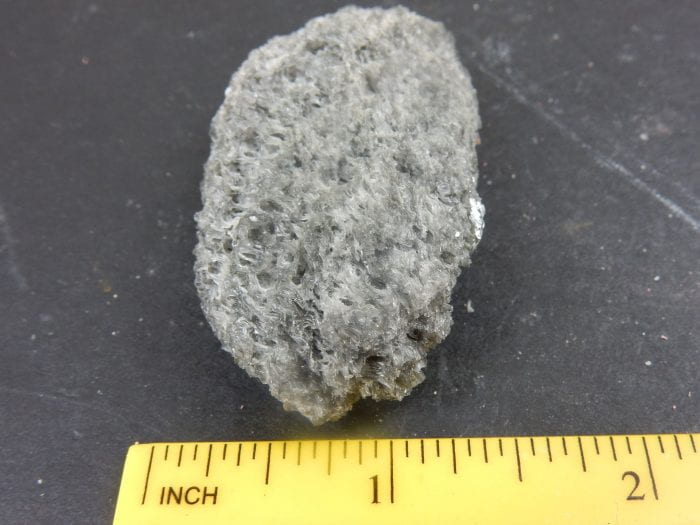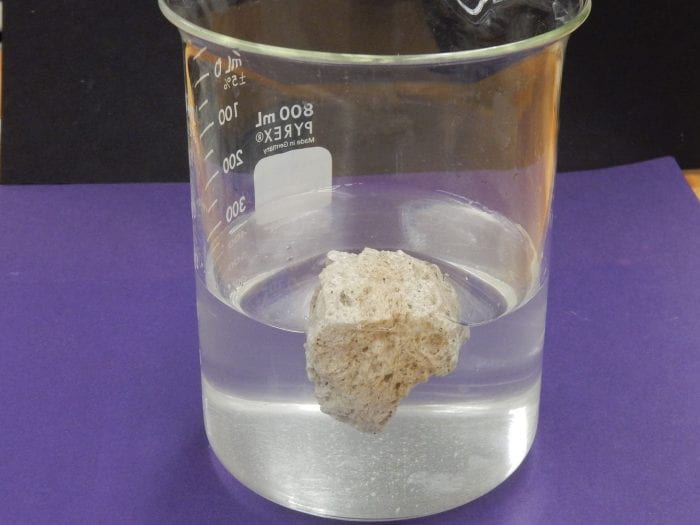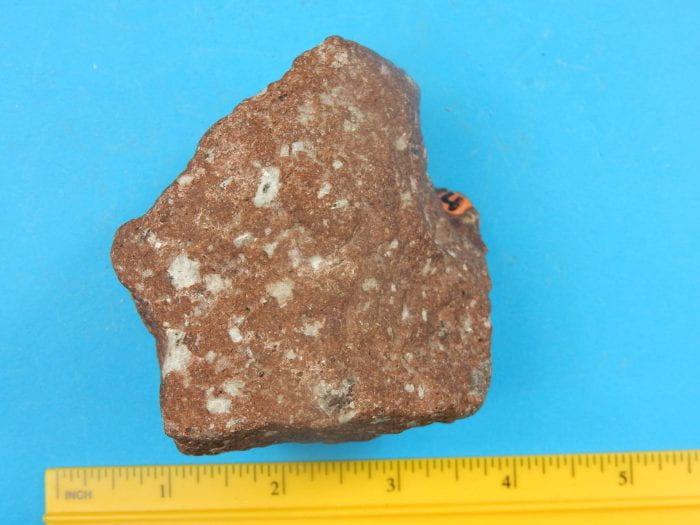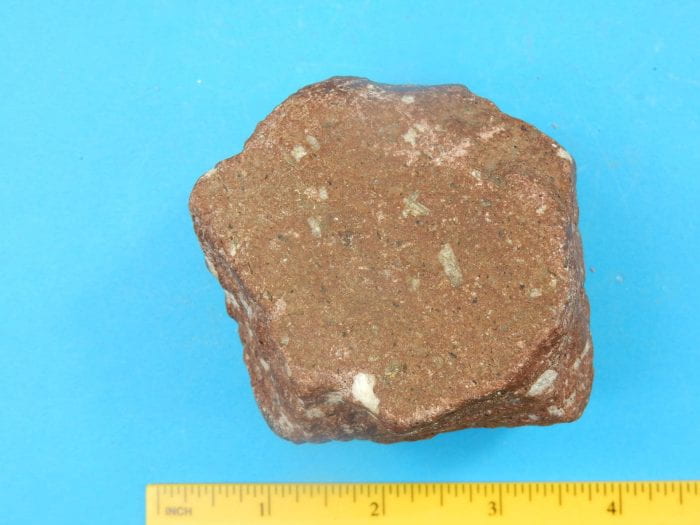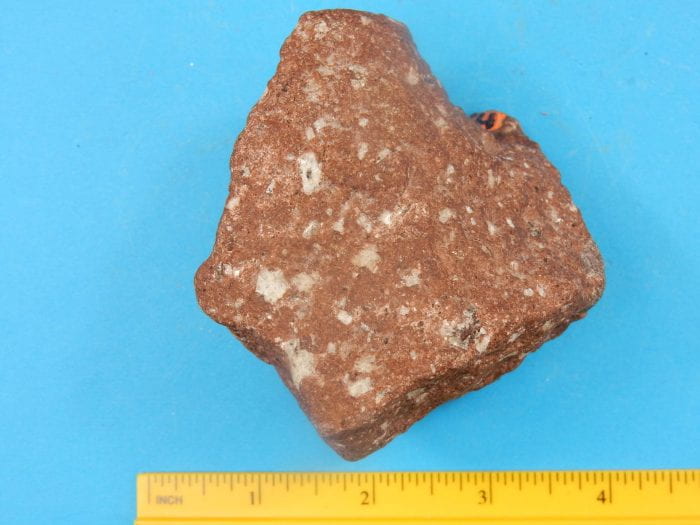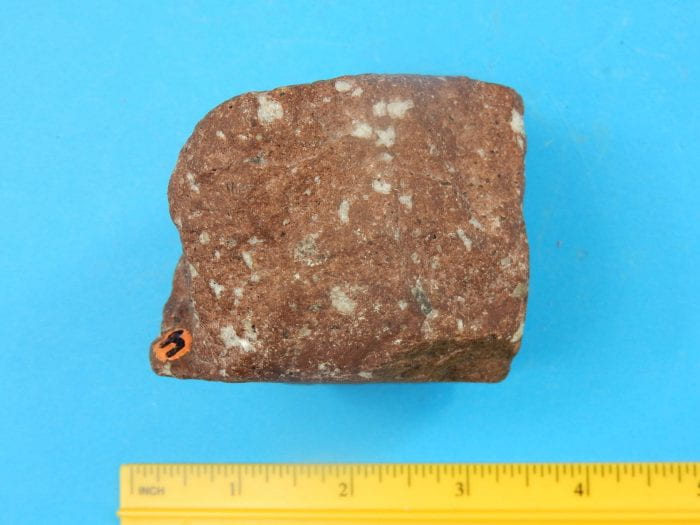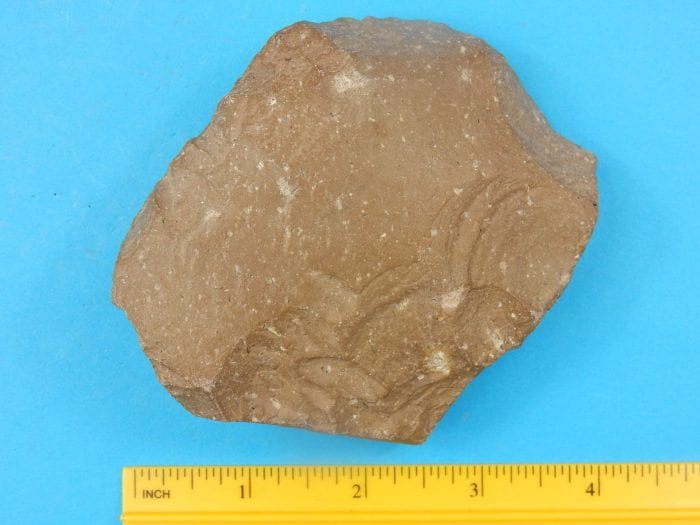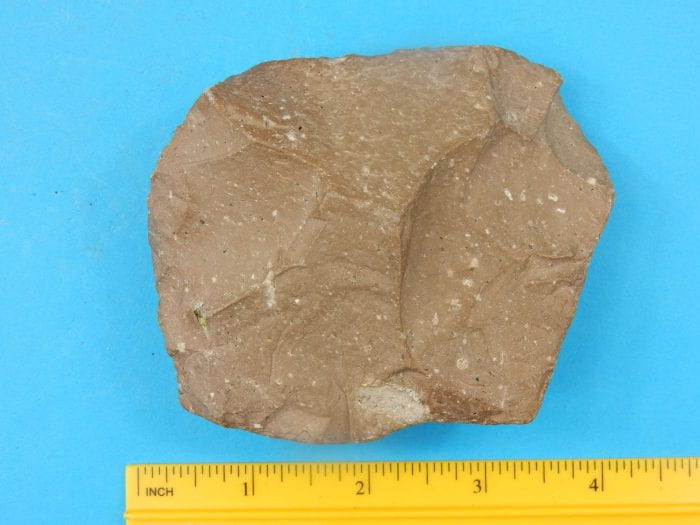Igneous Rocks Gallery
Select or click an igneous rock name to view photos and some facts about the rock.
Andesite Porphyry
Sample shown has a porphyritic texture with shows coarse grained pyroxene phenocrysts, with anhedral to euhedral crystal shape, in a fine-grained groundmass.
Texture: Porphyritic
Common Minerals: Plagioclase feldspar, pyroxene, amphibole, and biotite mica
Classification: Intermediate (20 – 50% mafic minerals)
Origin: Extrusive
Associated Occurence: Volcano
Interesting Facts: This volcanic rock is named after the Andes mountains in South America. Often formed by lava flows associated with andesitic volcanoes. Porphyritic texture indicates that some of the textures formed below the earth’s surface when the magma was cooling slowly (Phenocrysts) and on eruption the remaining lava cooled rapidly forming the finer grained groundmass.
Common Uses: Often used for aggregate
Basalt
Sample shows the fine-grained texture of basalt and dark color typical of ocean floor basalt.
Texture: Aphanitic
Common minerals: Plagioclase feldspar (commonly Calcium-rich), quartz (less than 10%) pyroxene, apatite, olivine, magnetite may be present
Classification: Mafic (50-100% mafic minerals)
Origin: Extrusive
Associated occurrence: Volcano
Interesting facts: Basalt is the most abundant type of rock forming the oceanic crust and is also believed to occur on the moon!
Common uses: Often used in construction for building material and paving stone. The naturally occurring hexagonal shape of columnar basalt makes for interesting paved designs. Polished slabbed basalt is also used as decorative tile.
Vesicular Basalt
Sample shown has large vesicles (voids in the rocks) formed when the cooling lava retains the shape of gas bubbles trapped in the lava.
Texture: Aphanitic and vesicular
Common minerals: Plagioclase feldspar (calcium -rich), pyroxene. Olivine and magnetite may also be present.
Classification: Mafic (50-100% mafic minerals)
Origin: Extrusive
Associated occurrence: Volcano
Common uses: Crushed vesicular basalt is commonly used as aggregate for construction and road fill.
Diorite
Sample shows the typical “salt and pepper” appearance of diorite.
Texture: Phaneritic
Common minerals: Plagioclase feldspar and hornblende. May contain Biotite mica and pyroxene
Classification: Intermediate (20 – 50% mafic minerals)
Origin: Intrusive
Associated occurrence: Pluton or dike
Common uses: Often used in construction for building material and paving stone
Dunite
Sample is made up predominantly of the green glassy mineral, Olivine. Minor amount of the black colored mineral pyroxene also present.
Texture: Phaneritic Common minerals: Olivine and pyroxene. Magnetite may also be present.
Common Minerals: Olivine and pyroxene. Magnetite may also be present.
Classification: Ultra mafic (100% mafic minerals)
Origin: Intrusive
Associated occurrence: Pluton
Interesting facts: Although the sample likes “light” in color the mineral olivine is a dark (ferro magnesian) silicate mineral resulting in this rock being classified as an ultramafic rock. Olivine is the mineral of the gemstone peridot, the birthstone for the month of August.
Common uses: Used in metallurgy to extract impurities.
Gabbro
Sample shows the coarse grained phaneritic texture of Gabbro. The dark color is reflective of the abundance of dark colored (pyroxene) minerals present in the rock. The white mineral, plagioclase feldspar, is also visible.
Texture: Phaneritic
Common minerals: Plagioclase feldspar (calcium -rich), pyroxene. May have olivine and magnetite.
Classification: Mafic (50-100% mafic minerals
Origin: Intrusive
Associated occurrence: Pluton
Interesting facts: Commercially, polished gabbro is sold under the name “black granite”.
Common uses: Polished gabbro is used for signage, floor and wall tiles as well as counter tops. Gabbro is also crushed and used as aggregate and construction.
Granite
Sample shown is the pink variety of granite. The dominant pink color is attributed to the abundance of the pink mineral K-feldspar.
Texture: Phaneritic
Common minerals: K-feldspar (potassium -rich), plagioclase feldspar, quartz, may have biotite or muscovite mica.
Classification: Felsic (1- 20% mafic minerals)
Origin: Intrusive
Associated occurrence: Pluton
Interesting facts: The ancient Egyptians built the pyramids from blocks of granite and limestone. The world’s first temple, the Brihadeeswarar Temple, built in the city of Tanjore in India in 1010, was made completely granite.
Common uses: Granite is used for tombstones, monuments, floor tiles and counter tops.
Loadstone
Sample has a coarse grained, phaneritic texture. The black color is reflective of the abundance of mafic minerals. Sample exhibits the property of magnetism, note the magnet sticking (magnetic attraction) to sample.
Texture: Aphanitic to phaneritic
Common Minerals: Magnetite
Classification: Mafic (50-100% mafic minerals)
Origin: Intrusive
Associated occurrence: Plutonic
Interesting facts: Loadstone in composed primarily of magnetite, a magnetic mineral, this makes it a naturally occurring magnet. This magnetic property results in metal objects sticking to this rock! Lodestone was also used in early compasses to roughly indicate the cardinal directions.
Common uses: Often used to form an abrasive known as “emery”. Also used as a pigment for paint and ceramics.
Obsidian
Sample shows glassy texture and unique conchoidal fracture of obsidian.
Texture: Glass
Common minerals: Minerals are not formed due to rapid cooling of the silica rich lava.
Classification: Felsic (1 – 20% mafic minerals)
Origin: Extrusive
Associated Occurrence: Volcano
Interesting Facts: Obsidian exhibits the unique type of fracture, conchoidal fracture, which results in a curved broken surface.
Common Uses: Used by early man as a cutting tool and arrow heads and are today used in some precision surgical blades.
Pegmatite
Sample shown is a Feldspar pegmatite some quartz crystals are over 1 inch in length.
Texture: Pegmatic
Common Minerals: Plagioclase (white) or K-feldspar (pink), quartz, amphibole and biotite mica may be present
Classification: Felsic (1 – 20% mafic minerals)
Origin: Intrusive
Associated Occurrence: Pluton, dike or sill
Interesting Facts: Due to a very slow cooling rate, pegmatites are very coarse grained, some pegmatic rocks can have mineral crystals that can be more than 12 inches in length
Common Uses: Commonly used in glass and ceramic production. Also used in circuit boards and retardation plates.
Porphyritic Granite
Sample shows large feldspar phenocrysts (pink) surrounded be finer grained crystals forming the groundmass.
Texture: Porphyritic
Common Minerals: K-feldspar (Pink), Microcline or albite (white feldspars), quartz. Biotite and hornblende also present (black).
Classification: Felsic (1-20% mafic minerals)
Origin: Intrusive
Associated Occurrence: Plutonic
Interesting Facts: Formation of porphyritic granitic indicates that the magma had two stages of cooling at depth in the earth’s crust.
Common Uses: Polished slabs are used for building dimension stone, tile, and countertops.
Pumice
Sample shows characteristic glassy, vesicular texture of pumice. Pumice is a light weight rock and will float in water.
Texture: Vesicular and glassy
Common minerals: Volcanic Glass. May contain Feldspar and Quartz.
Classification: Felsic (1-20% mafic minerals)
Origin: Extrusive
Associated Occurrence: Volcano
Interesting Facts: Pumice is one of the few types of rocks that floats!
Common Uses: Commonly uses as a skin exfoliant. Also used as an abrasive for polishing, in the production of concrete and for water filtration.
Rhyolite
Sample shown has a porphyritic texture. Phenocrysts are quartz crystals.
Texture: Aphanitic
Common Minerals: Plagioclase feldspar, quartz. Biotite mica usually present.
Classification: Felsic (1-20% mafic minerals)
Origin: Extrusive
Associated Occurrence: Volcano
Interesting Facts: Gem deposits, such as red beryl, topaz, agate, jasper, and opal are sometimes found associated with rhyolite.
Common Uses: Rhyolite is used for construction aggregate, as dimension stone, paving, tiles and walls
Rhyolitic Tuff
Sample shows the fine grained nature of small pyroclastic material (ash sized) that is lithified to form this tuff.
Texture: Aphanitic
Common Minerals: Quartz, K feldspar
Classification: Felsic (1-20% mafic minerals)
Origin: Extrusive- pyroclastic
Associated Occurrence: Volcano
Interesting Facts: Rhyolitic tuffs are formed from pyroclastic material, ejected during explosive volcanic eruptions. This material will be transported in the atmosphere and then fall back to the earth. This deposit is subsequently compacted and cemented to form a tuff.
Common Uses: Often used as an aggregate, fill-in construction, building material and decorative rock in landscaping
References And Glossary
Igneous Rock Textures
| Glassy | a smooth, glassy-looking texture in which no mineral phenocrysts occur; the resulting rock is actually amorphous or without a crystalline form or structure. |
| Vesicular | vesicles or holes are obvious creating a sponge-like appearance to the volcanic rock. This term is also applied to igneous rock without a crystalline mineral make-up, or amorphous material such as pumice or scoria. |
| Aphanitic | a dense texture where mineral grains are not visible to the unaided eye. |
| Phaneritic | an even-granular texture with mineral phenocrysts visible to the unaided eye. |
| Aphanitic Porphyry | visible phenocrysts embedded in the rock with an invisible or aphanitic groundmass or background. |
| Phaneritic Porphyry | an uneven-granular texture where larger visible phenocrysts are embedded in a rock with smaller, but visible, phenocrysts making up the groundmass or background. |
| Pegmatitic | very coarse, uneven-granular texture with phenocrysts larger than 1 cm in size. |
| Fragmental or Tuff | pyroclastic fragments, solidified ash particles, crystal and glass debris, cemented together. |
Igneous Rock Composition
| Felsic | a composition high in potassium and sodium rich silicates with a silica content of about 70%; these igneous rocks are mainly in continental crust. |
| Intermediate | variable between felsic and mafic. |
| Mafic | a composition high in calcium, magnesium, and iron rich silicates with a silica content of about 50%; these igneous rocks are mainly in oceanic crust. |
| Ultramafic | a composition very high in magnesium and iron with a silica content of less than 50%; these igneous rocks are found in the mantle. |
References
- Pellant, C. (1992). Rocks and minerals. 1st American ed. New York: Dorling Kindersley
- Geology science (2018) retrieved from https://geologyscience.com

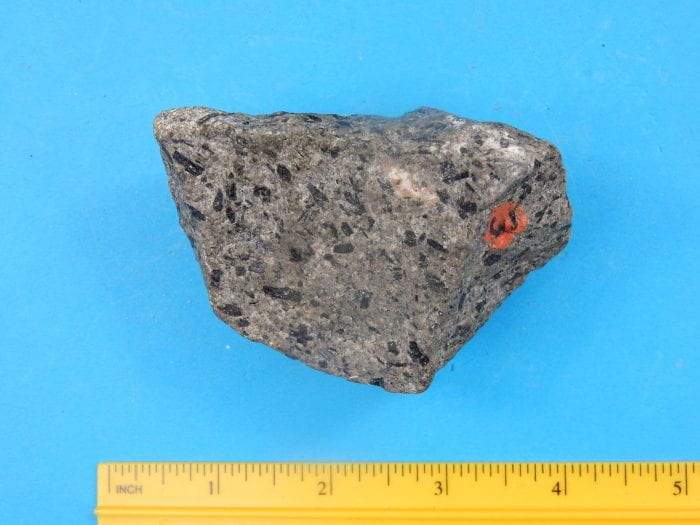
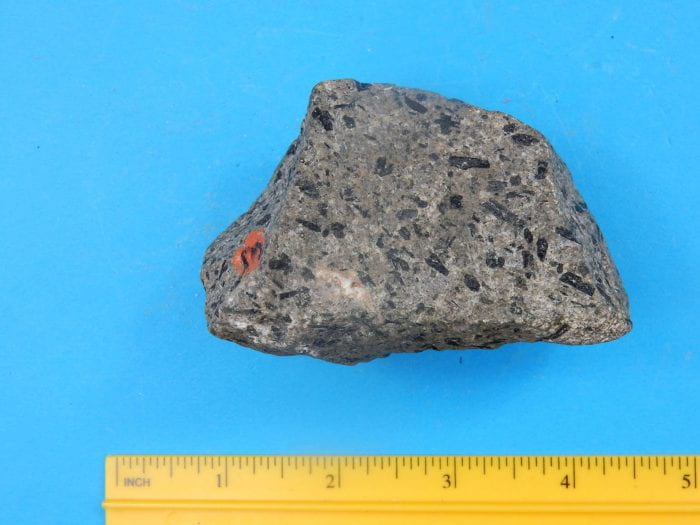
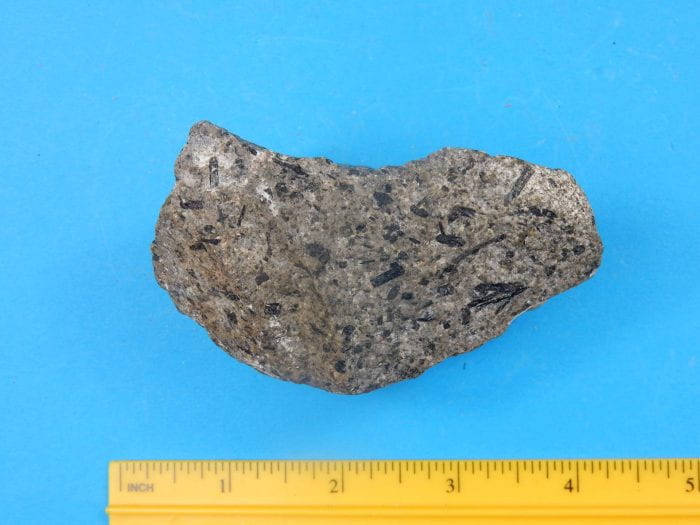
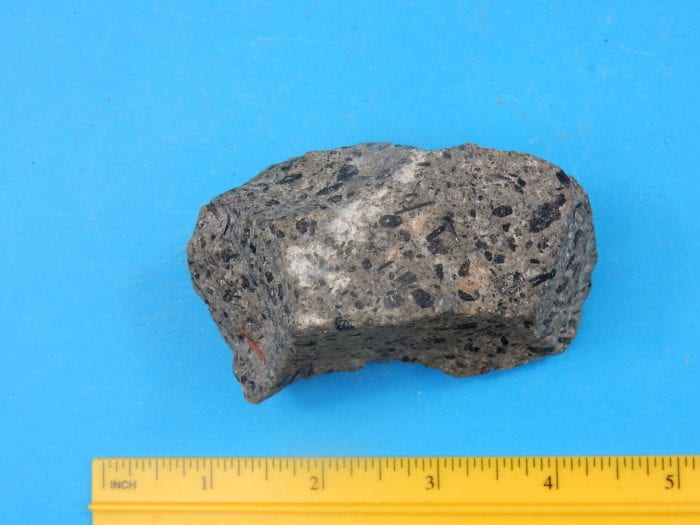
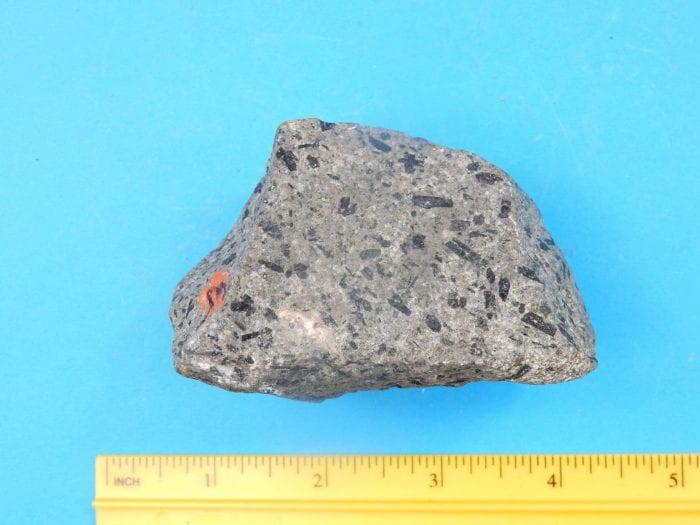
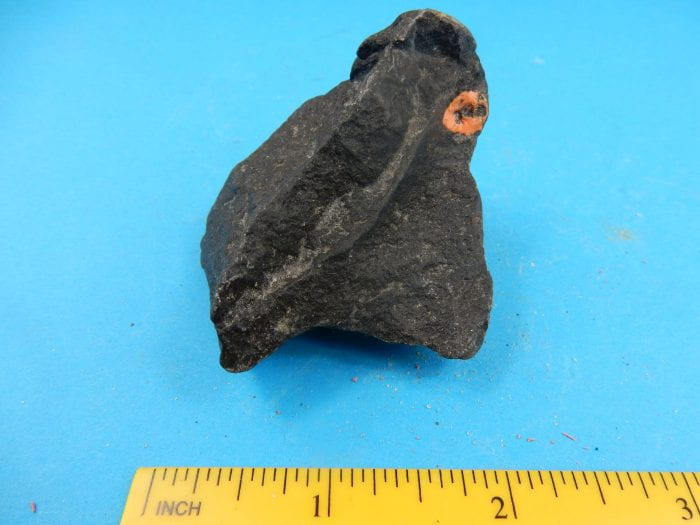
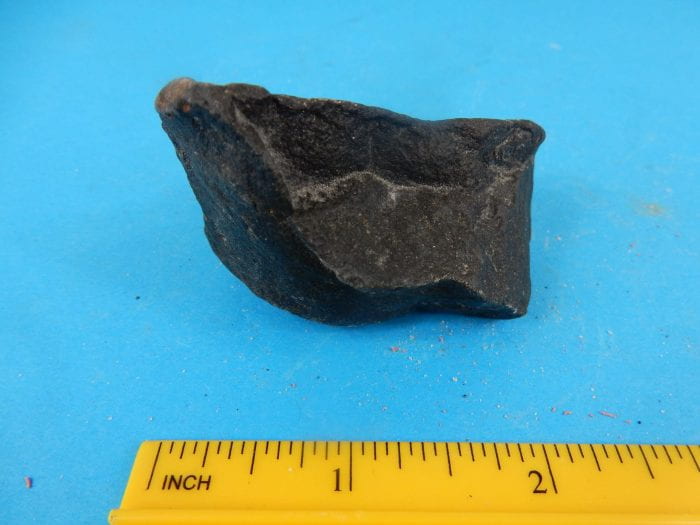
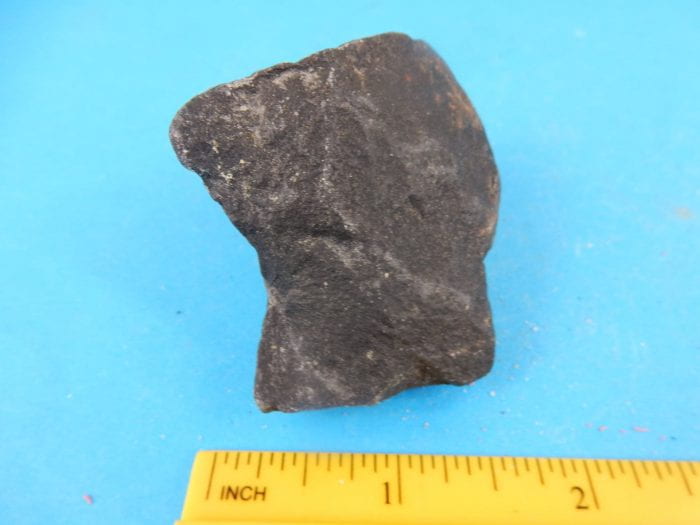
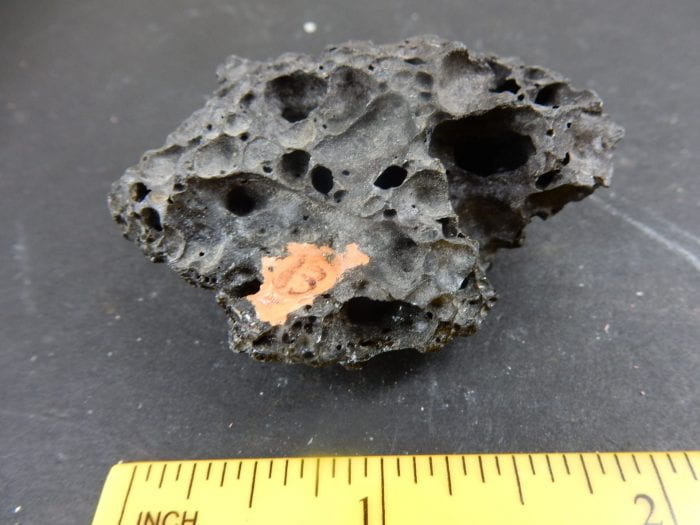
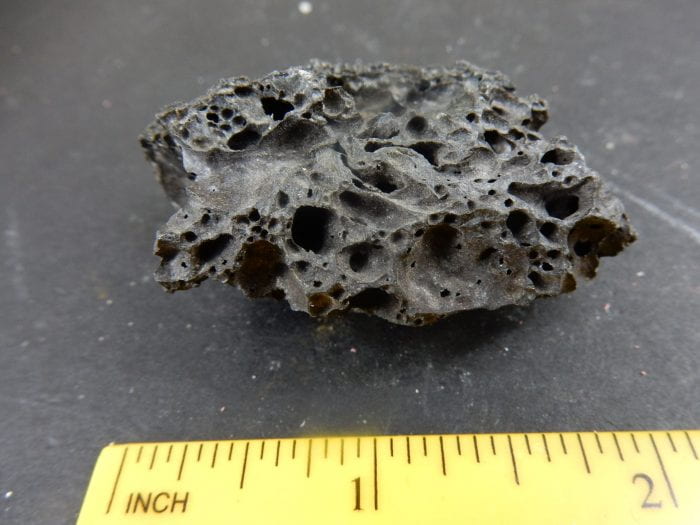
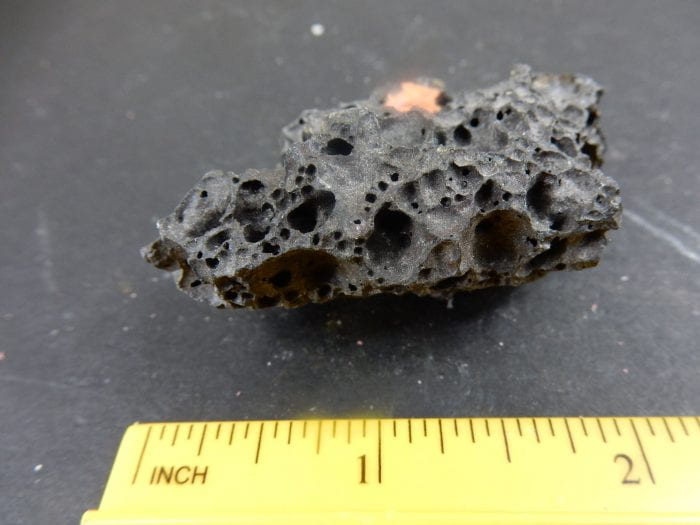
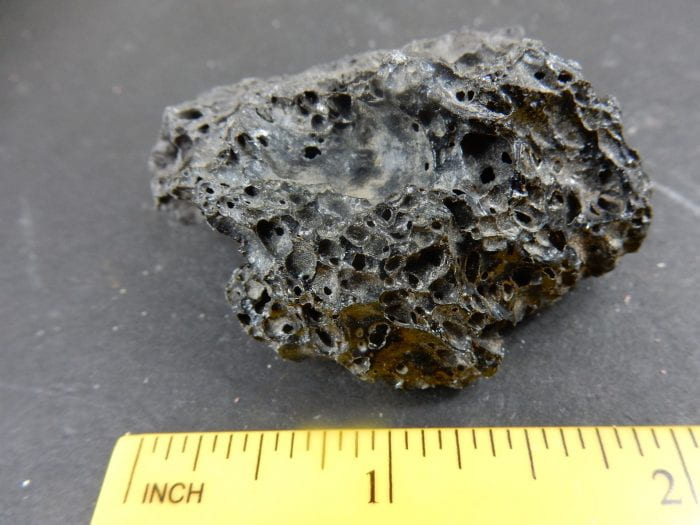
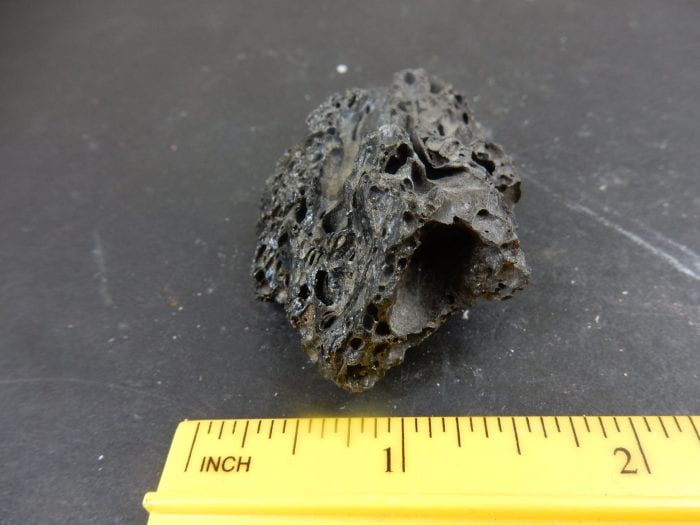
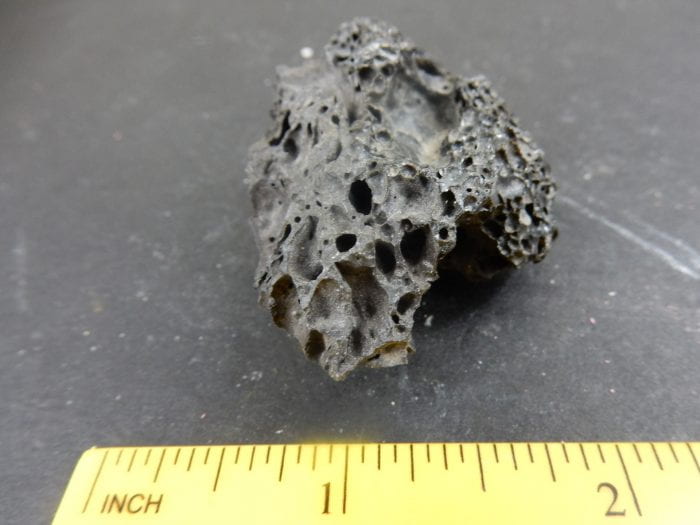
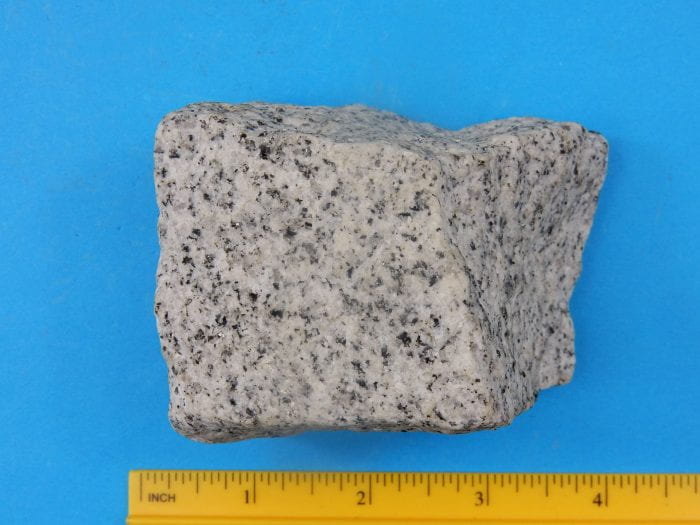
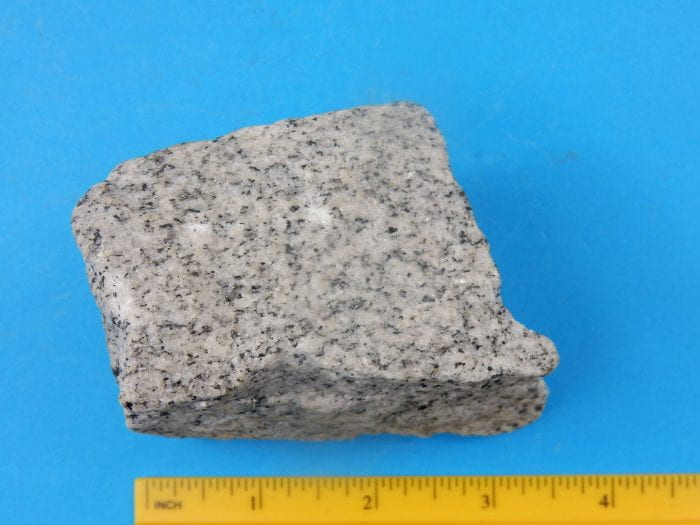
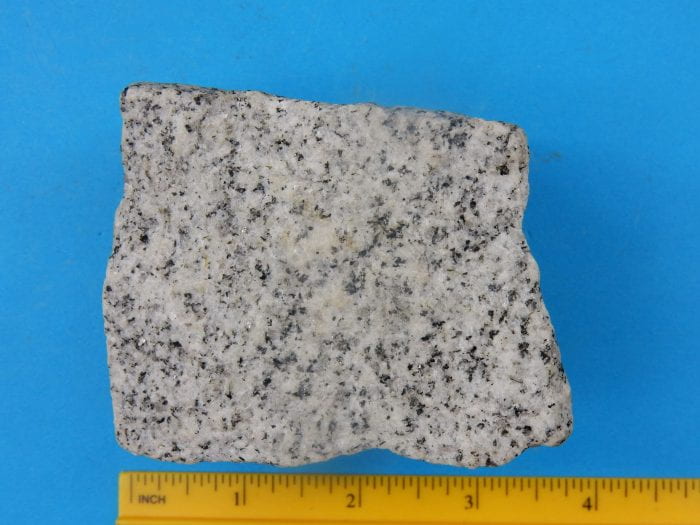
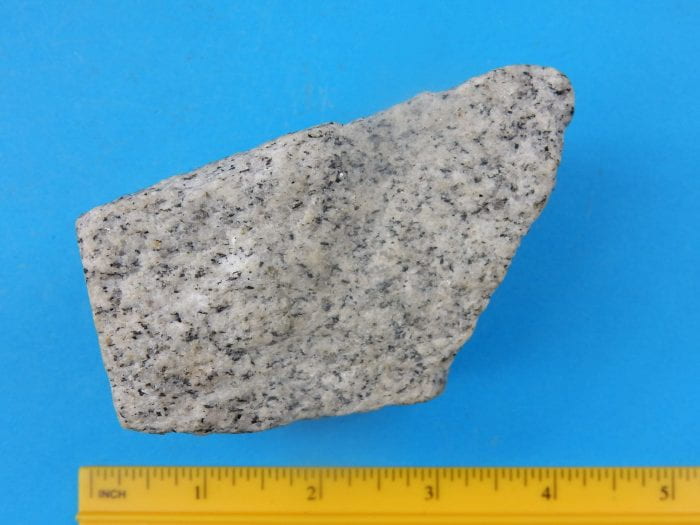
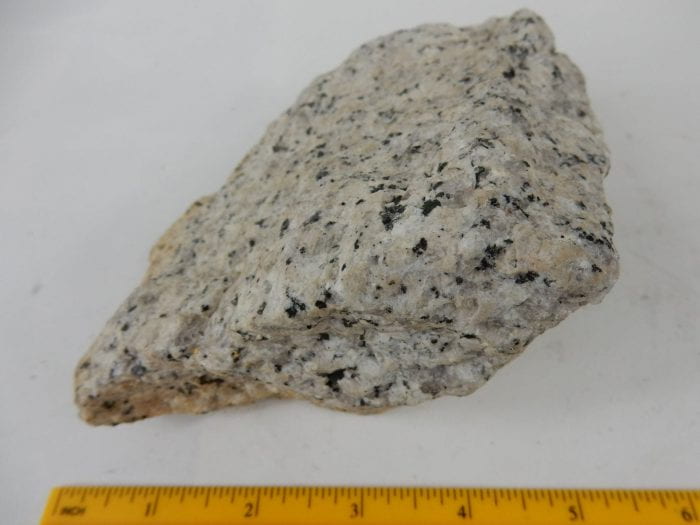
![Dunite DSCN3152[1] Dunite](https://sites.broward.edu/science-wellness-north/files/2021/02/Dunite-DSCN31521-800x615.jpg)
![Dunite DSCN3153[1] Dunite](https://sites.broward.edu/science-wellness-north/files/2021/02/Dunite-DSCN31531-800x615.jpg)
![Dunite DSCN3154[1] Dunite](https://sites.broward.edu/science-wellness-north/files/2021/02/Dunite-DSCN31541-800x615.jpg)
![Dunite DSCN3155[1] Dunite](https://sites.broward.edu/science-wellness-north/files/2021/02/Dunite-DSCN31551-800x615.jpg)
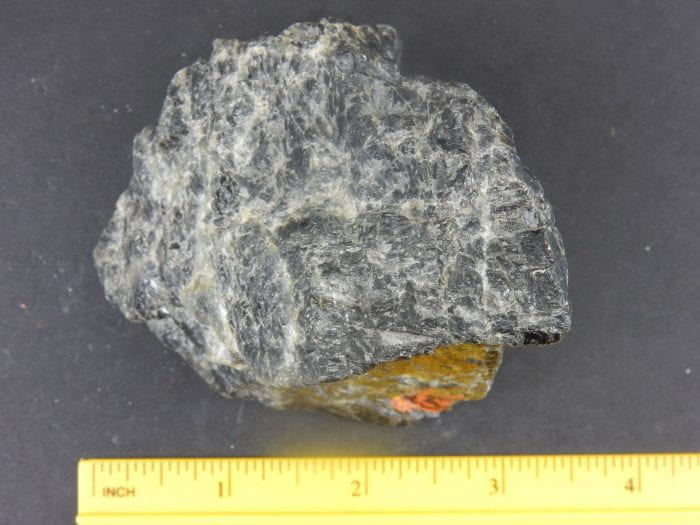
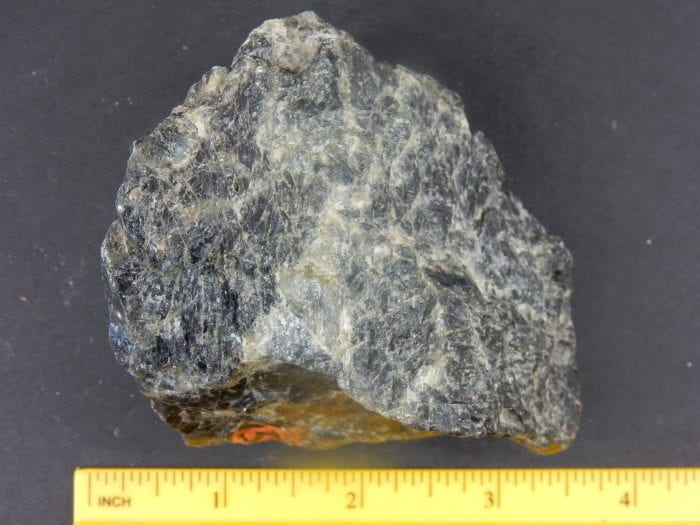
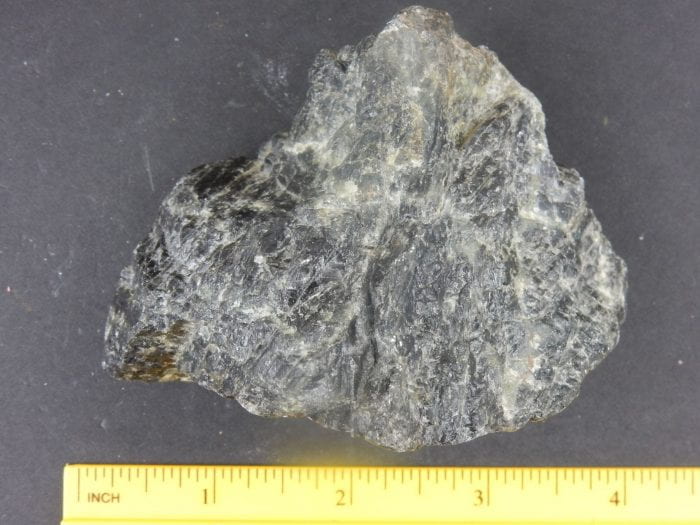
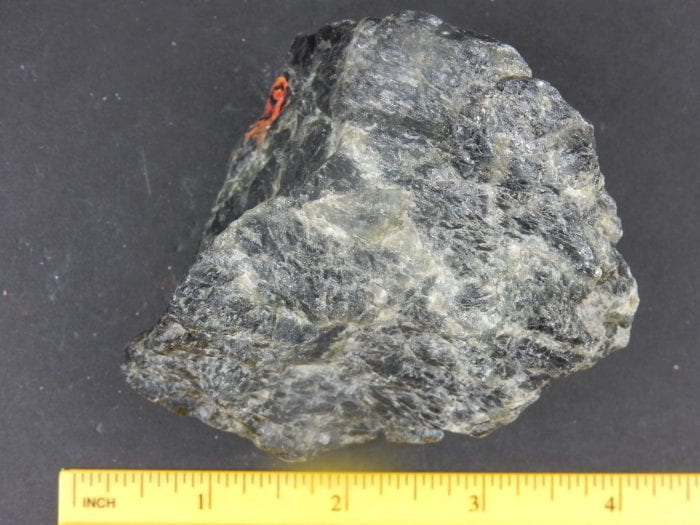
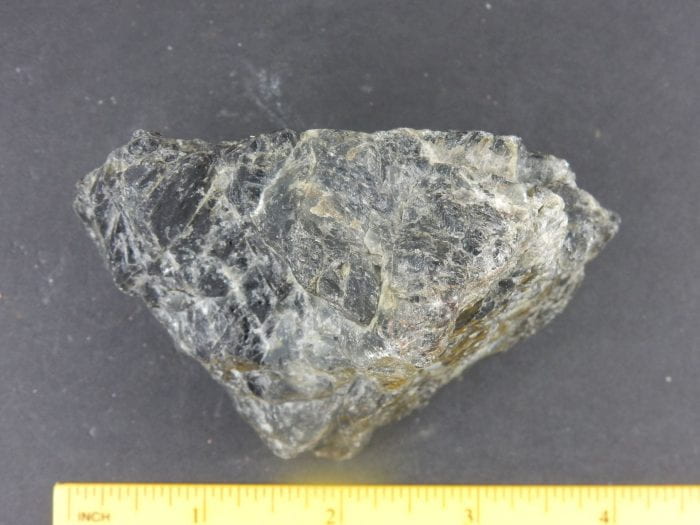
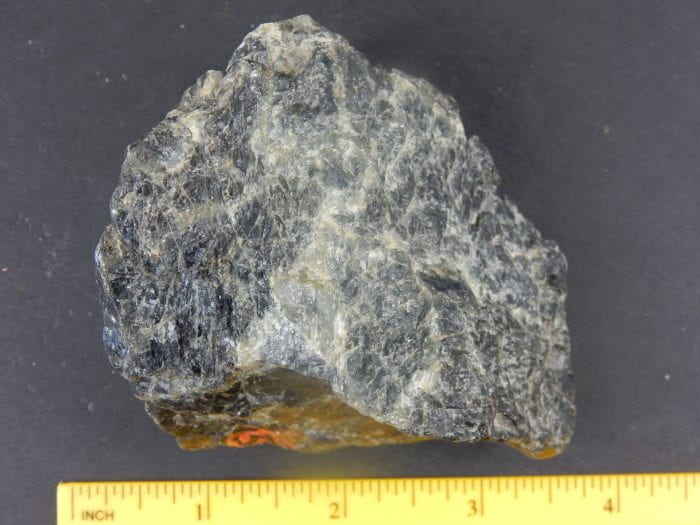
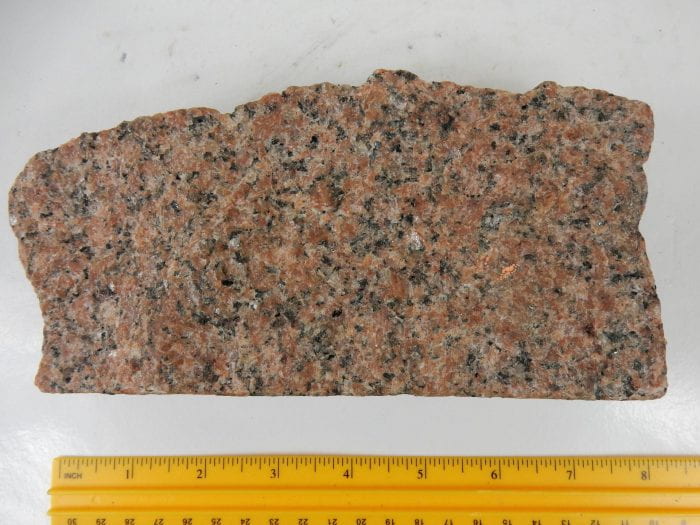
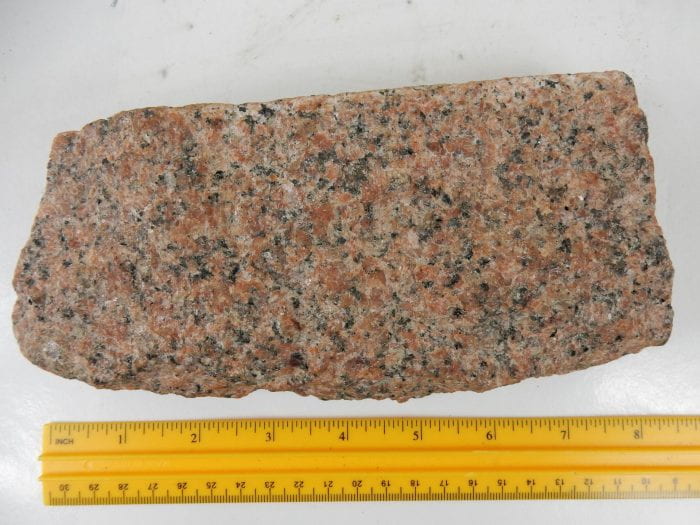
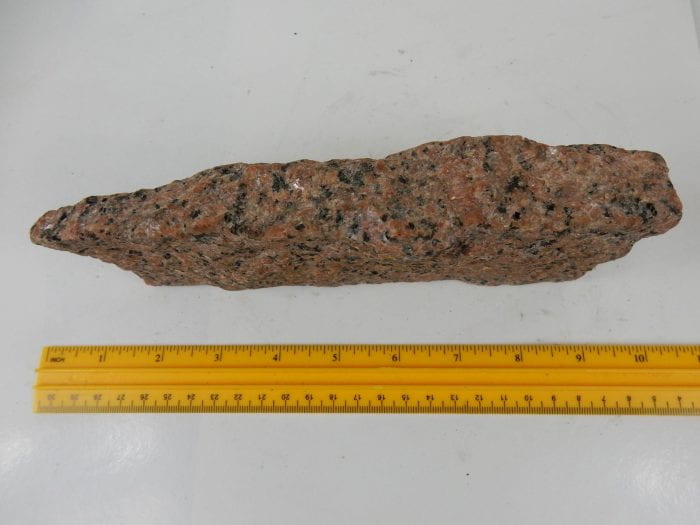
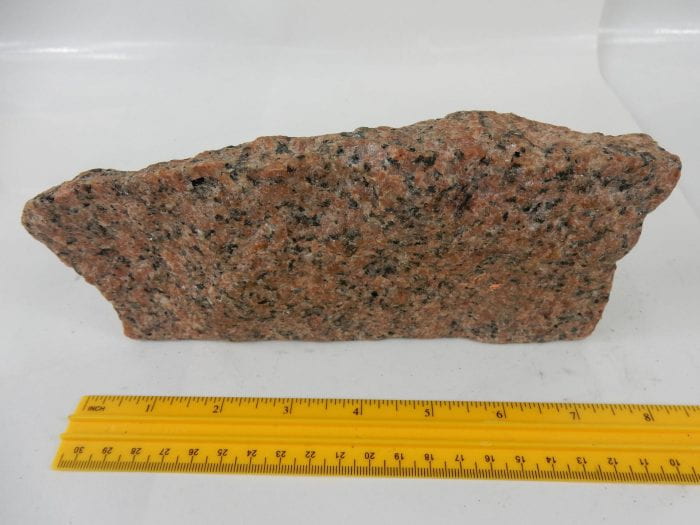
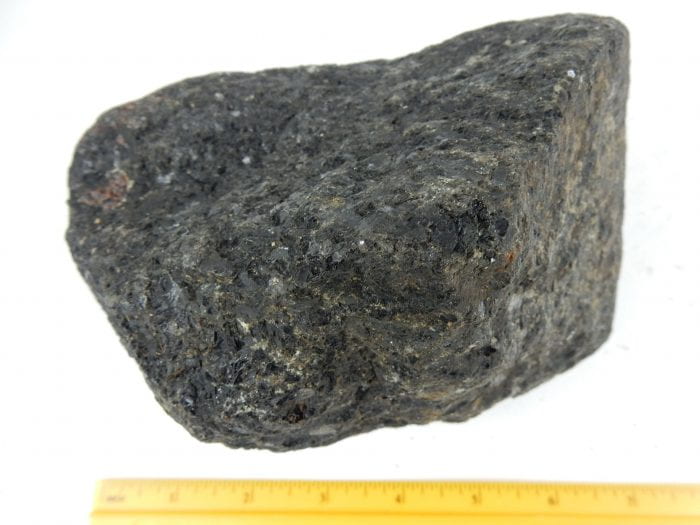
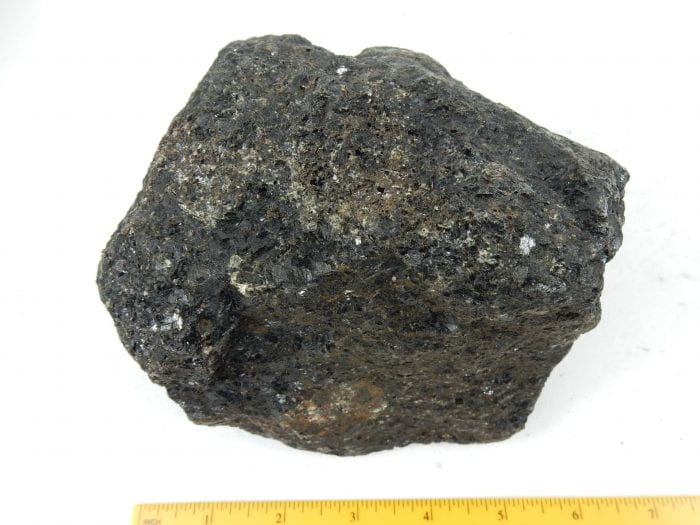
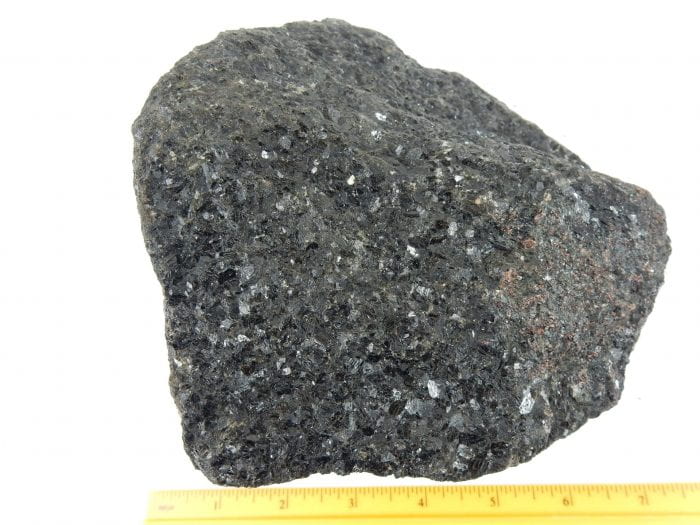
![Loadstone DSCN3158[1] (1) Loadstone](https://sites.broward.edu/science-wellness-north/files/2021/02/Loadstone-DSCN31581-1-1-700x525.jpg)
